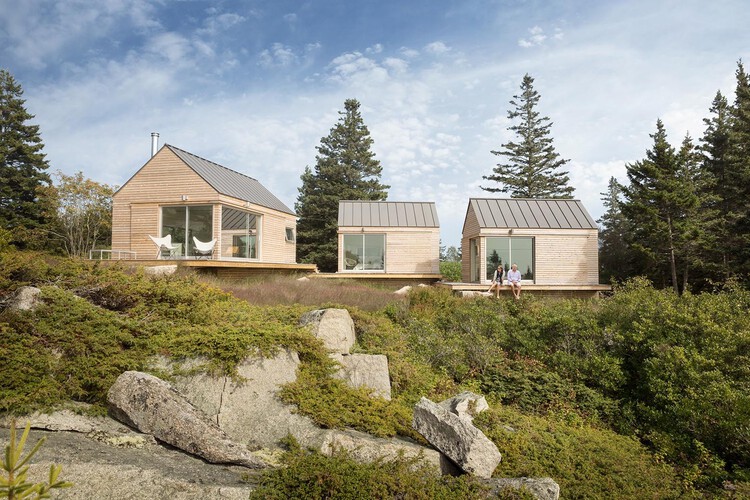 Little House on the Ferry / GO Logic. Image © Trent Bell Photography
Little House on the Ferry / GO Logic. Image © Trent Bell Photography
Share
Or
https://www.archdaily.com/1034846/guesthouses-and-lessons-in-generosity-spaces-of-hospitality-in-rural-america
Spaces of hospitality are a mirror to how different cultures articulate generosity, care, belonging, and identity. In busy city settings, this is reflected in hotels, service systems, and curated amenities that directly shape the visitor experience. These spaces translate care into measurable forms, where success is correlated with efficiency, luxury, and brand identity.
In rural America, hospitality operates with a different logic. In these environments, care is grounded in labor and community, while directly responding to the specific ecological and cultural geographies. Distance, limited infrastructure, and close social networks demand forms of architecture that are flexible and self-sufficient. Designs respond to shifting weather, local materials, and a culture where support often begins with neighbors. In this landscape, architectural thresholds of hospitality emerge in responsive, yet unexpected, ways.
Rural hospitality reveals a quiet intelligence in how buildings should sustain people and place. It invites architects to design for endurance while rejecting novelty and the romanticization of the pastoral landscapes. When hospitality is understood as infrastructure, it is valued as an ethic that connects environment, culture, and community. The following sections examine how domestic extensions, productive landscapes, and everyday infrastructures in rural America embody this ethic. Each example suggests how spaces of generosity, when materialized through design, can shape a grounded, civic life in rural communities.
Related Article From Coast to Countryside: 15 Rural Hotels in Portugal The Domestic Extension: Guesthouses, Inns, and Bed and Breakfast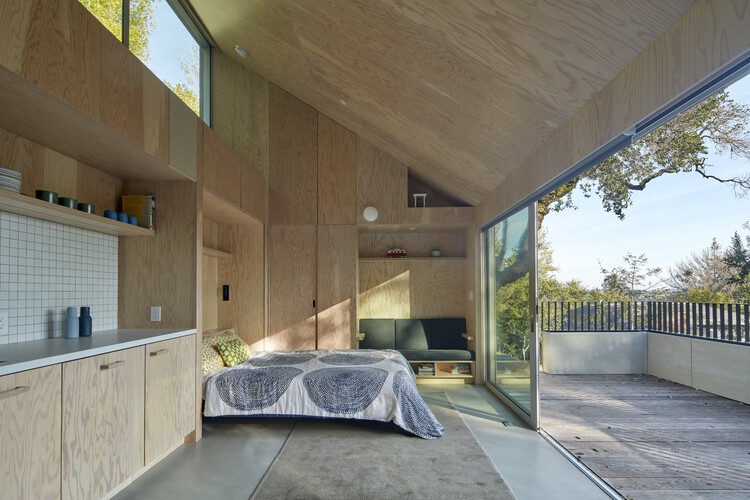 Crest Guesthouse / Mork-Ulnes Architects. Image © Bruce Demonte
Crest Guesthouse / Mork-Ulnes Architects. Image © Bruce Demonte
The most enduring form of rural hospitality begins in the house. Domestic life extends outward through guest rooms, converted inns, and bed-and-breakfasts, where the boundary between private and public softens. These hybrid dwellings depend on calibration rather than scale. A small inn must decide how much of the home can be shared and where privacy must hold its ground.
Arrival becomes the first act of design. A gravel drive that narrows, a shift in grade, or a line of trees signals the passage from road to dwelling. The entry sequence, whether through a side porch or a back gallery, reveals how the hosts intend to receive their guests. A check-in at a kitchen table calls on warm familiarity, while one at a small desk beneath the stairs maintains distance. Every design gesture translates these ethics into physical form.
The domestic extension depends on legibility. Guests must understand how to move through rooms that are not entirely theirs through subtle spatial suggestions. A shift in floor material, a pendant light that pools softly over a table, or a screen that turns a view can mark boundaries without signage. These seemingly small gestures make the domestic extension legible so that the spaces do not restrict behavior through instruction.
Material and climate reinforce this ethic of care. Raised floors protect against humidity and floodplain. Deep porches and shutters filter heat and glare. Brick, cypress, and pine carry lessons of maintenance and repair, linking local materials to regional memory. Accessibility and safety are seamlessly integrated. In these dwellings, intimacy becomes a form of infrastructure. The success lies not in novelty or display but in how easily a guest can feel at home once they have entered another’s space.
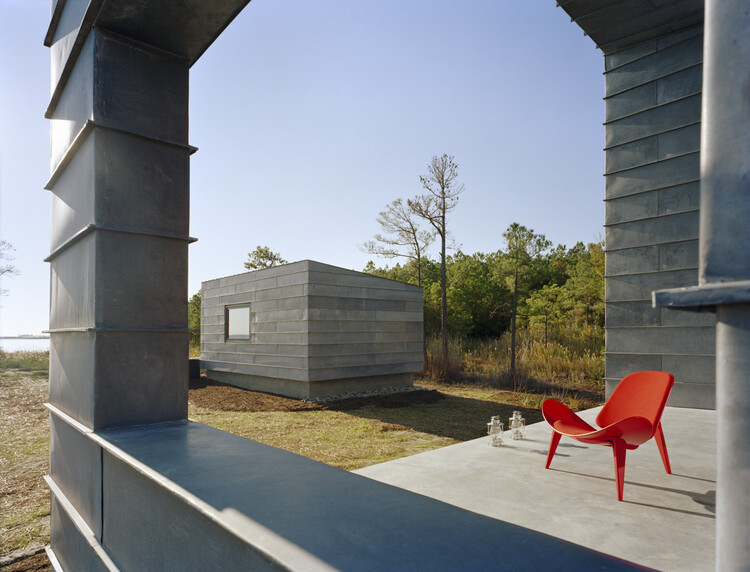 Hoopers Island Residence / David Jameson Architect. Image © Paul Warchol PhotographyProductive Landscapes: Local Immersion in Agricultural Production
Hoopers Island Residence / David Jameson Architect. Image © Paul Warchol PhotographyProductive Landscapes: Local Immersion in Agricultural Production
Where the home invites guests inward, productive landscapes extend hospitality outward. Farms, fisheries, and forestry operations welcome visitors through participation rather than display. Here, design aligns comfort with the rhythm of labor and the logic of ecology. The guest engages with the work, and architecture must accommodate both teaching and toil.
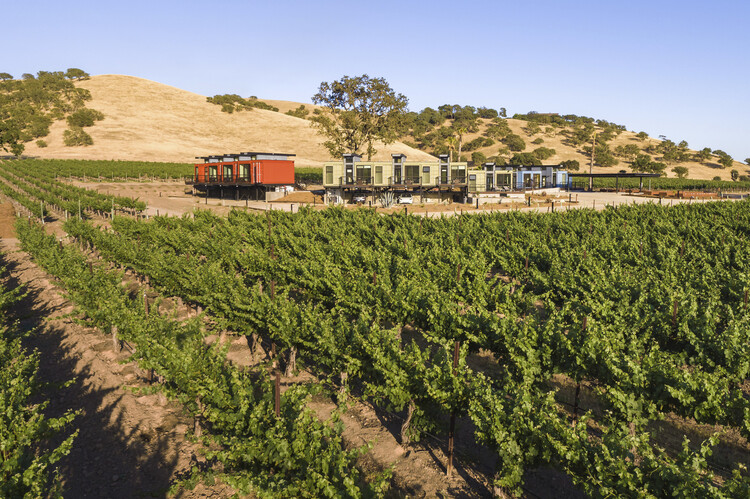 Geneseo Inn / Ecotech Design. Image © Paul Vu
Geneseo Inn / Ecotech Design. Image © Paul Vu
Hospitality on working land depends on clarity. Paths must respect fences and irrigation lines. Shade structures double as tool shelters. Pavilions mark the edges of fields, rather than claiming their centers. Mud rooms, boot thresholds, and outdoor sinks protect crops and animals from contamination. These modest acts keep architecture honest to the work it serves.
Seasons organize the plan. Spring demands shelter from mud and pollen, while late summer calls for shade and airflow. Roofs collect and slow rain, discharging visibly into the soil. Screens are cut for local insects, not abstract standards. Kitchens and bathhouses accommodate both workers and guests, their surfaces durable and their systems exposed. The architecture succeeds when visitors can read how it works.
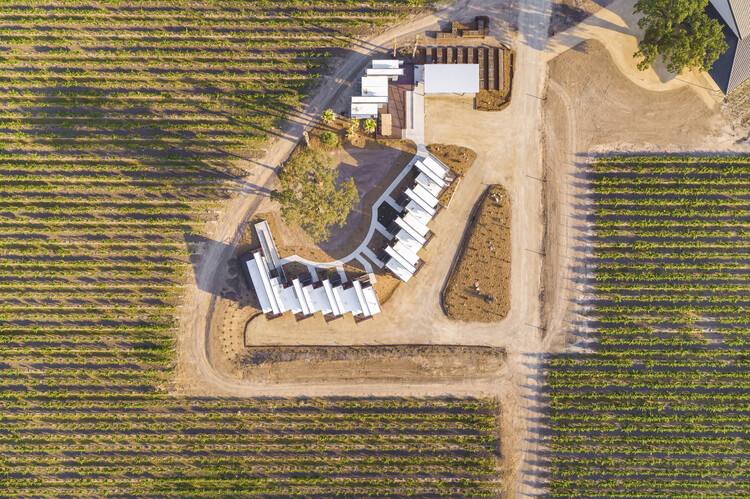 Geneseo Inn / Ecotech Design. Image © Paul Vu
Geneseo Inn / Ecotech Design. Image © Paul Vu
Hospitality in this setting acknowledges labor as its foundation. The guest departs with understanding rather than consumption. Reciprocity becomes spatial, an exchange between those who host, those who learn, and the land that sustains them.
Focus on Wellbeing: Health and Creativity Retreats
Retreats and wellness centers across rural America often occupy forests, wetlands, and hill country. In these settings, the environment itself becomes the host. Architecture withdraws rather than asserts. Cabins are lifted to protect roots and hydrology: openings privilege shade, cross ventilation, and filtered light. Materials are left to weather; their maintenance is part of the rhythm of the place.
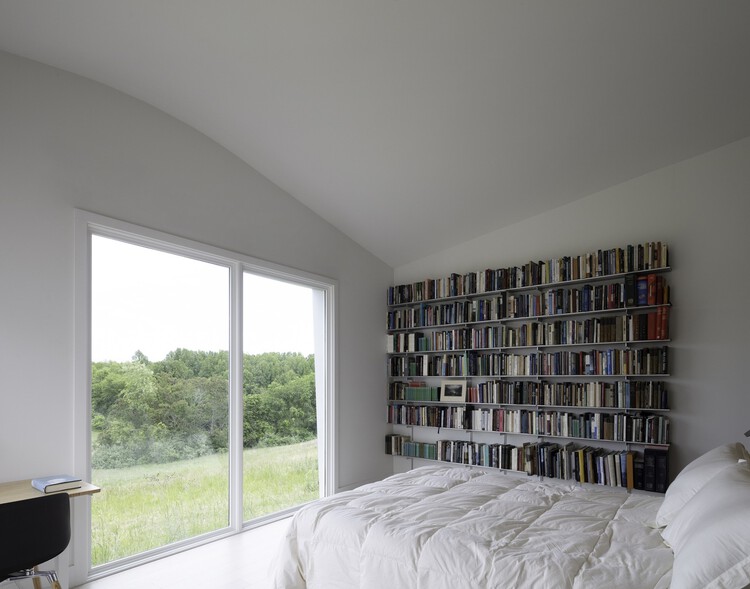 Shenandoah Writer’s Retreat / SCHAUM-SHIEH . Image © Naho Kubota Photography
Shenandoah Writer’s Retreat / SCHAUM-SHIEH . Image © Naho Kubota Photography
Comfort in these places is calibrated, not sealed. Shutters, screens, and porches construct microclimates that accept heat, humidity, and wind as design conditions. A bathhouse that faces the morning sun dries faster and feels safer; a studio oriented north invites concentration. Even minor changes in eave depth or wall porosity alter seasonal use.
These environments cultivate attention. Digital restraint, for instance, can be supported spatially by concentrating connectivity in common areas rather than distributing it everywhere. A guest who reads the movement of air through a screen understands the site more intimately than one who sits behind glass. The architecture teaches perception.
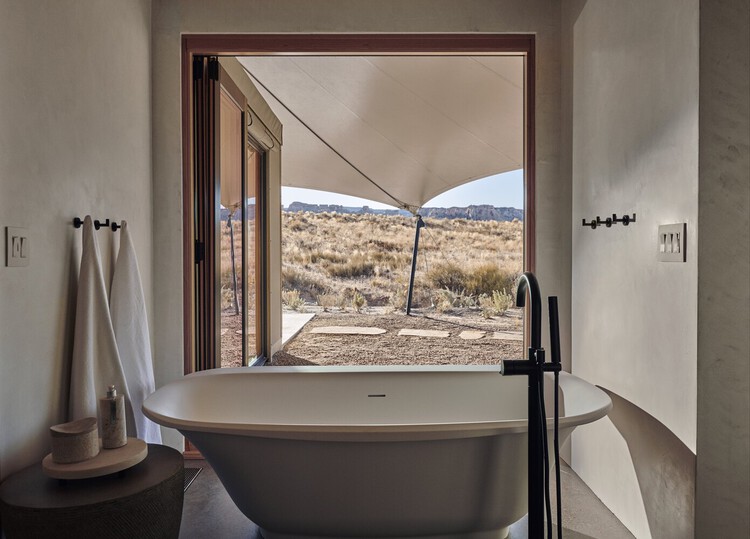 Camp Sarika / Amangiri + Luxury Frontiers. Image © Aman
Camp Sarika / Amangiri + Luxury Frontiers. Image © Aman
The theoretical frame is ecological rather than stylistic. Following scholars such as Tim Ingold and Lisa Heschong, one might argue that comfort arises from relationship, not insulation. Rural retreat architecture makes these relationships visible: rain chains, cisterns, and shaded paths demonstrate how care for comfort aligns with care for place.
The Campgrounds: Architecture of Temporal Rest
Campgrounds distill hospitality to its most basic architecture. They replace ownership with occupation and permanence with duration. Tents, platforms, and small cabins define personal territories, while shared washhouses, kitchens, and fire rings support communal life.
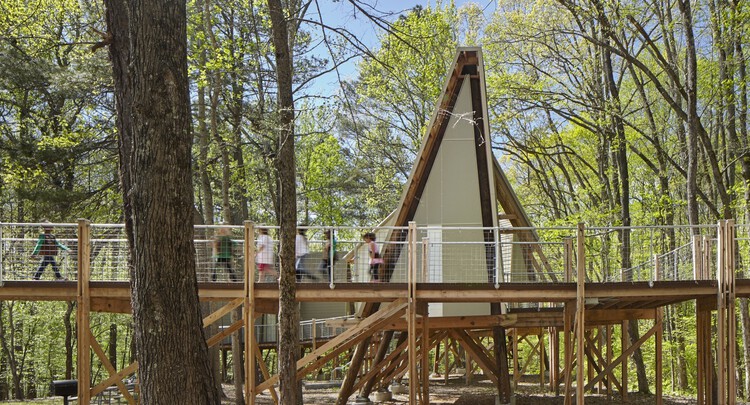 Camp Graham / Weinstein Friedlein Architects. Image © Mark Herboth Photography
Camp Graham / Weinstein Friedlein Architects. Image © Mark Herboth Photography
The design of even a minimal camp depends on judgment. Sites must strike a balance between privacy and safety, as well as proximity and quiet. Paths require stability under rain and legibility after dark. Waste and water systems must be honest and straightforward. A composting toilet that works every time is more hospitable than a complex system that fails during peak use.
Managed campgrounds formalize these principles, while dispersed or backcountry sites rely on the visitor’s competence. Both demand architecture, even at its lightest, to organize coexistence. The rise of glamping reintroduces comfort, but also the risk of theatricality and detachment. The design challenge is to maintain legibility: when power, water, and waste systems are visible, they teach resource awareness. Campgrounds enact a civic ethic. They ask strangers to share systems and respect land that belongs to no one. In this sense, they become laboratories for environmental and social reciprocity, small rehearsals for how communities might live together with less.
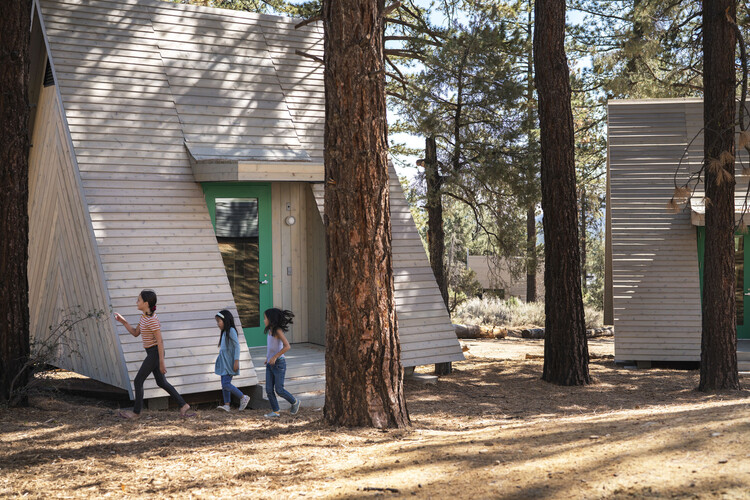 Girl Scout Camp Lakota / Perkins&Will. Image © Here and Now AgencySupporting Infrastructure: Spaces of Transit
Girl Scout Camp Lakota / Perkins&Will. Image © Here and Now AgencySupporting Infrastructure: Spaces of Transit
The overlooked infrastructures of rural hospitality, including gas stations, diners, motels, or visitor centers, form the connective tissue of the rural American landscape. They mediate between local routines and transient populations. Their vocabulary is practical: canopy, counter, corridor. Yet their endurance gives them a significant cultural weight.
These structures can be renewed without losing legibility. A diner can open as a cooling center after storms. A motel can transform parking into shaded courts. A gas station canopy can integrate electric charging with seating and trees, turning a wait into rest. Each intervention reclaims the civic potential of the ordinary.
Night access remains essential. A restroom that stays open, clean, and well-lit may be the most critical piece of hospitality in a county. Directional lighting preserves dark skies while keeping faces visible. Signage should accurately display distances and services. Such forms of infrastructure become civic repositories of local memory and continuity.
Rurality and the Production of Cultural Spaces
In parallel, rural America is productive and symbolic. In this landscape, hospitality is often described as innate or moral, yet it exists alongside histories of exclusion and inequity. Architecture cannot erase these tensions, but it can refuse to aestheticize them. By acknowledging land tenure, seasonal labor, and the economics of maintenance, designers can frame hospitality as a shared responsibility rather than a spectacle.
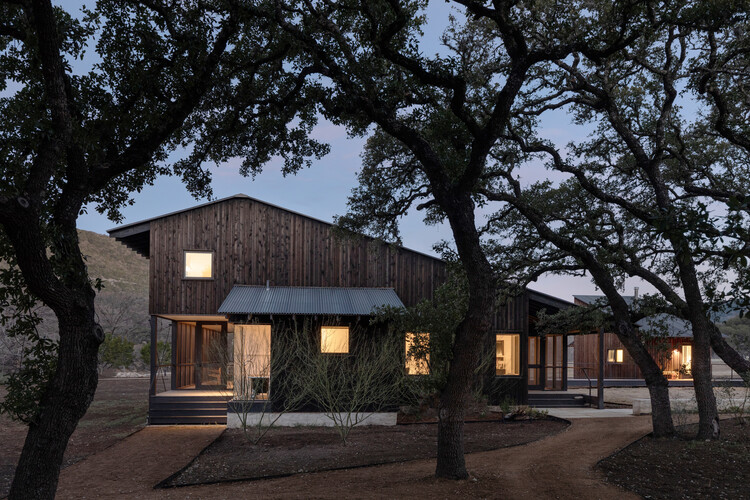 Camp Frio Retreat / Tim Cuppett Architects. Image © Whit Preston
Camp Frio Retreat / Tim Cuppett Architects. Image © Whit Preston
To design for hospitality in rural America is to design for coexistence. Every decision, from porch depth to drainage slope, influences how neighbors, workers, and visitors share the same ground. A plan that makes its use visible invites stewardship. A material that accepts repair builds trust. A site that remains open to locals in the off-season demonstrates that hospitality is not a transaction but a form of governance.
Urban measures of success, such as occupancy rates, amenities, and service hierarchies, fail to capture the realities of rural environments. Here, success is measured through relationships that persist across seasons. These are architectures of care rather than consumption, sustained through continuity, labor, and attention.
The Ethics of Hospitality Little House on the Ferry / GO Logic. Image © Trent Bell Photography
Little House on the Ferry / GO Logic. Image © Trent Bell Photography
Belonging is a national anxiety for the United States. As urban and rural identities become increasingly distinct, hospitality assumes renewed significance as a spatial and moral framework.
Rural hospitality challenges architecture to reconsider its instruments. When comfort aligns with climate, when care becomes structure, and when generosity is built into the plan, design transcends service. Rural American environments offer this lesson with clarity. They reveal that hospitality, at its best, is a systemic approach.
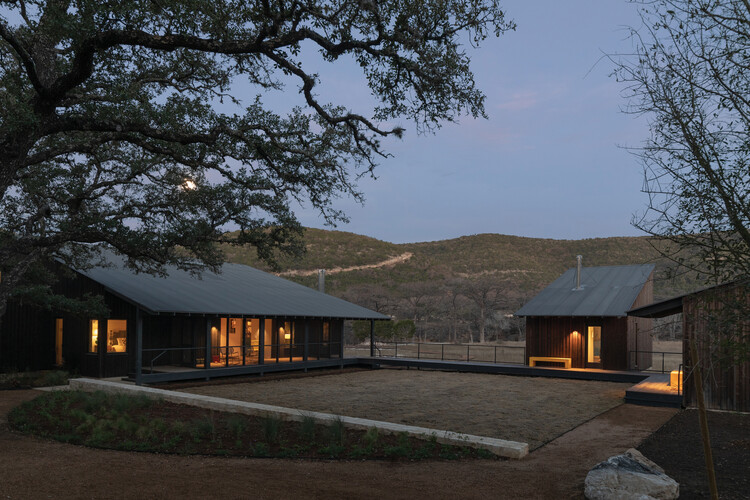 Camp Frio Retreat / Tim Cuppett Architects. Image © Whit Preston
Camp Frio Retreat / Tim Cuppett Architects. Image © Whit Preston
To host without spectacle and to maintain without hierarchy is a design ethic. It asks architects to treat generosity as an intentional material, to measure success through clarity and endurance rather than novelty. In this light, the rural American landscape is not peripheral but instructive. It shows that buildings can welcome through proportion, comfort through climate, and endure through care. Beyond hotels and retreats, hospitality becomes an architecture of belonging.
This article is part of the ArchDaily Topics: The Architecture of Culture Today. Every month, we explore a topic in-depth through articles, interviews, news, and architecture projects. We invite you to learn more about our ArchDaily Topics. And, as always, at ArchDaily we welcome the contributions of our readers; if you want to submit an article or project, contact us.

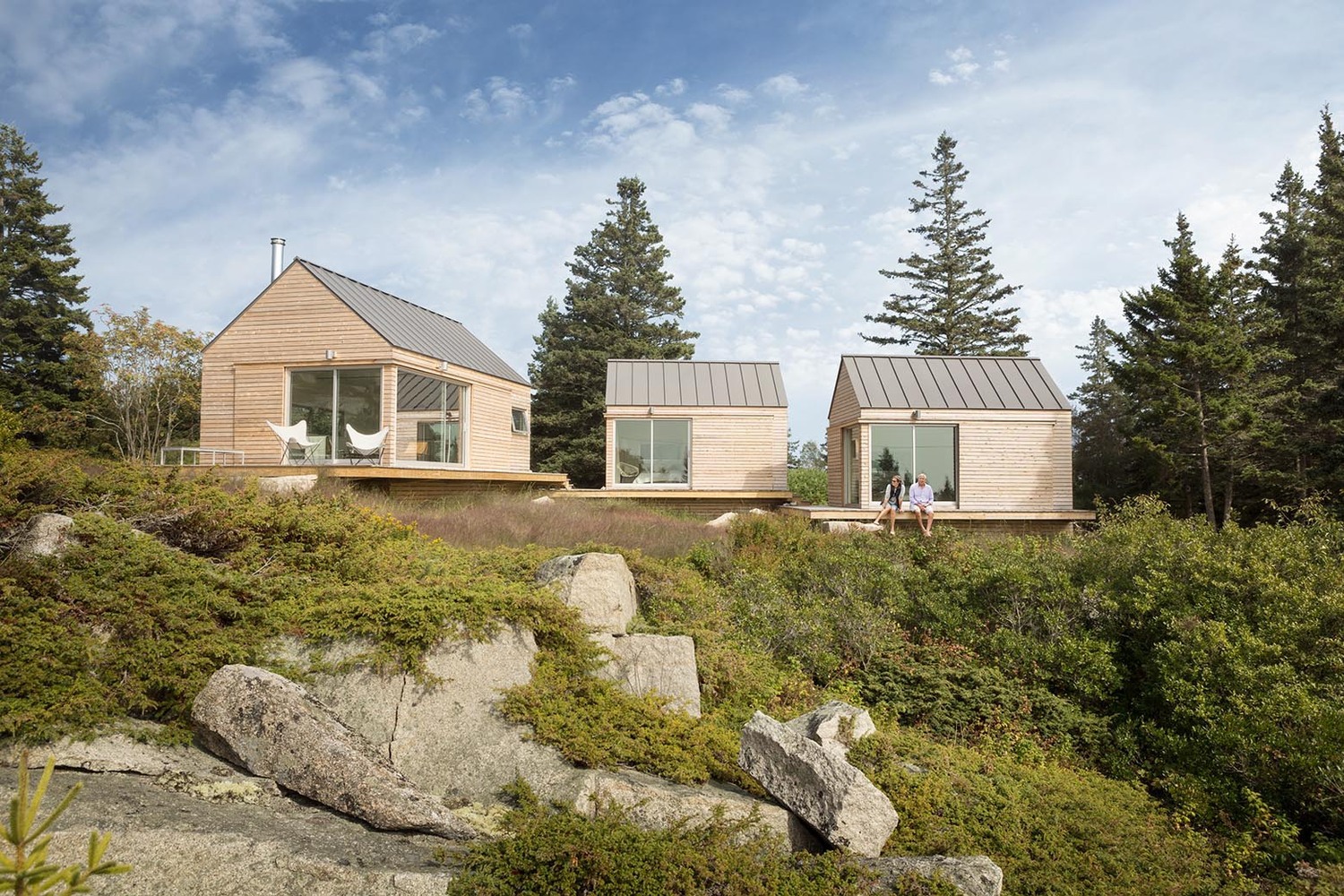

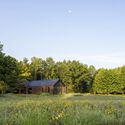
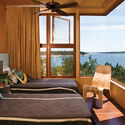
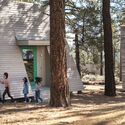
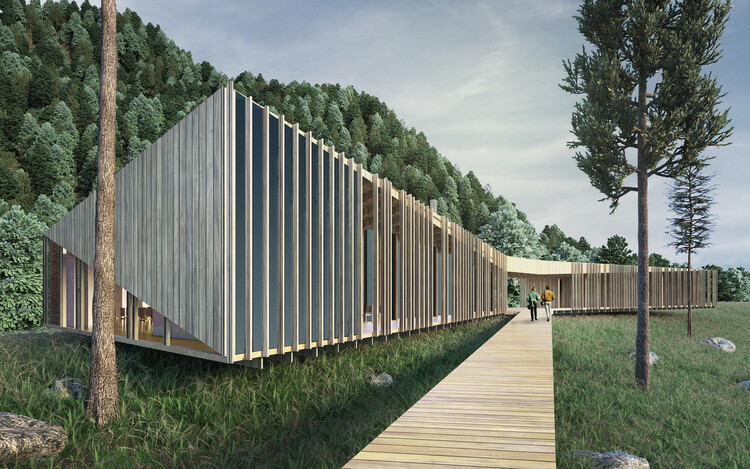 Appalachian Long House Proposal / Honor Award Winner of the 2018 Maine Mass Timber Design Competition. Image © Yueqi Li
Appalachian Long House Proposal / Honor Award Winner of the 2018 Maine Mass Timber Design Competition. Image © Yueqi Li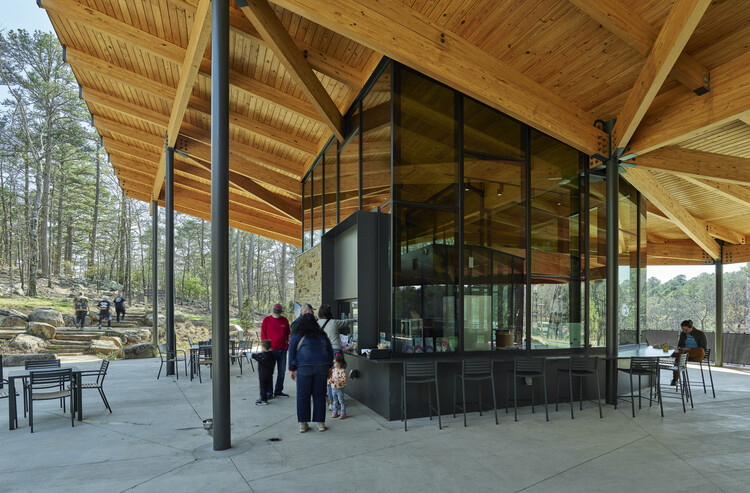 Pinnacle Mountain State Park Visitor Center / Polk Stanley Wilcox Architects. Image © Timothy Hursley
Pinnacle Mountain State Park Visitor Center / Polk Stanley Wilcox Architects. Image © Timothy Hursley